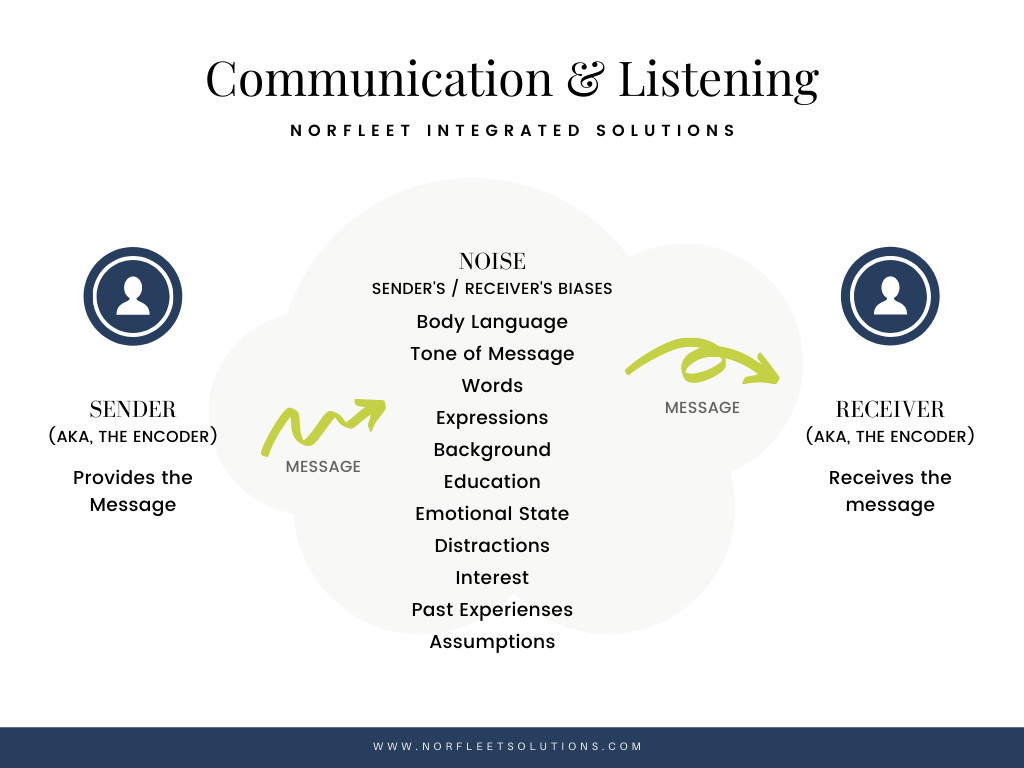Featured in The Ritz Herald
What immediately came to mind when you read this title? For many, thoughts of communication immediately bring to mind what we say. Surprisingly, the number one communication skill required of a leader is the ability to listen.
What is Listening?
Listening is often considered one of the foundations of communication. Listening and hearing are not the same thing. Most of us were fortunate enough to be born with hearing, but listening is a skill that must be learned and practiced. When you hear something, sound enters your eardrum, passes through your ear canal, and registers in your brain. Listening is what you do with that sound and how you interpret it once it registers.
Here are some tips for successful listening:
- Listen intentionally.
- Listen to understand.
- Listen with interest.
- Get rid of your assumptions.
- Listen for what is not said.
Listening is hard work. When other people are listening to us, they have the same difficulties we do in trying to focus on the message. Our minds wander, noises or thoughts distract us, and we are often thinking about what to do or say next.
Practicing active listening means that we try to understand things from the speaker’s point of view. It includes letting the speaker know that we are listening and that we have understood what was said. Active listening can be described as an attitude that leads to listening for shared understanding. Instead of listening to respond, active listeners listen to understand.
When we make a decision to listen for total meaning, we listen for the content of what is being said and the attitude behind it. Is the speaker happy, angry, excited, sad, or something else entirely?
The communication message is one thing, but the way that people feel is what gives full value to the message. It’s important to read between the lines and listen for what is not being said. Responding to the speaker’s feelings adds an extra dimension to listening. Are they disgusted and angry or in love and excited? Perhaps they are ambivalent! These are all feelings that you can respond to in your part of the conversation. This will make the entire dialogue more meaningful and prove that you’re actively engaged.

Listening Cues
When you are listening to someone, there are techniques to apply that demonstrate you are paying attention to the speaker, provided you are genuine in using them.
Physical indicators include making eye contact, nodding your head from time to time, and leaning into the conversation. You can also give verbal cues or use phrases such as “Uh-huh,” “Go on,” “Really!” and, “Then what?”
Another technique is to use questions for clarification or summarizing statements. A few examples are:
- “Do you mean they charged you $7 for just a cup of coffee?”
- “So, after you got a cab, got to the store and found the right sales clerk, what happened then?”
Tips for Better Listening
- Make a decision to listen. Close your mind to clutter and noise and look at the person speaking with you. Give them your undivided attention.
- Do not interrupt people. Make it a habit to let them finish what they are saying. Respect that they have thoughts they are processing and speaking about and wait to ask questions or make comments until they have finished.
- Keep your eyes focused on the speaker and your ears tuned in to their voice. Do not let your eyes wander around the room, just in case your attention does too.
- Carry a notebook or start a conversation file on your computer. Write down all the discussions that you have in a day. Capture the subject, who spoke more (were you listening or doing a lot of the talking?), what you learned in the discussion and the who, what, when, where, why, and how aspects of it. Once you have conducted this exercise eight to 10 times, you will be able to determine the level of your listening skills.
- Ask a few questions throughout the conversation. When you ask, people will know that you are listening to them and are interested in what they have to say. Your ability to summarize and paraphrase will also demonstrate that you heard them.
When you demonstrate good listening skills, they tend to be infectious. A great leader sets a good example when they can demonstrate good listening skills.






0 Comments